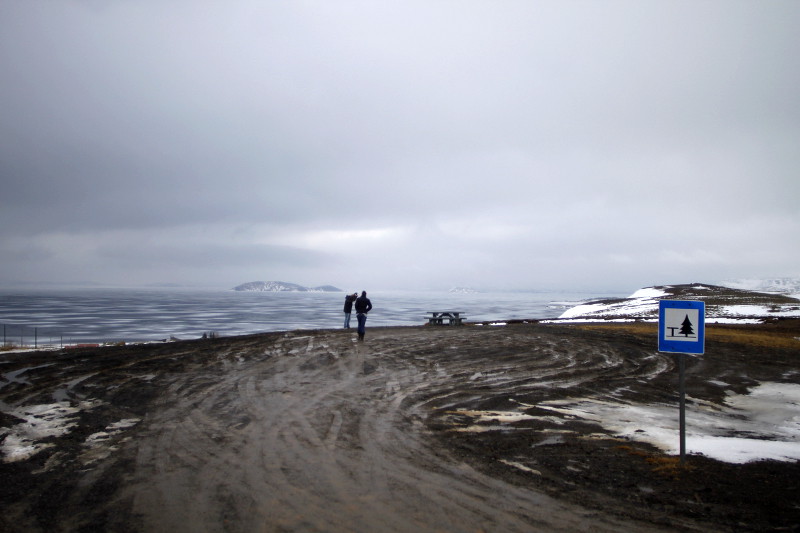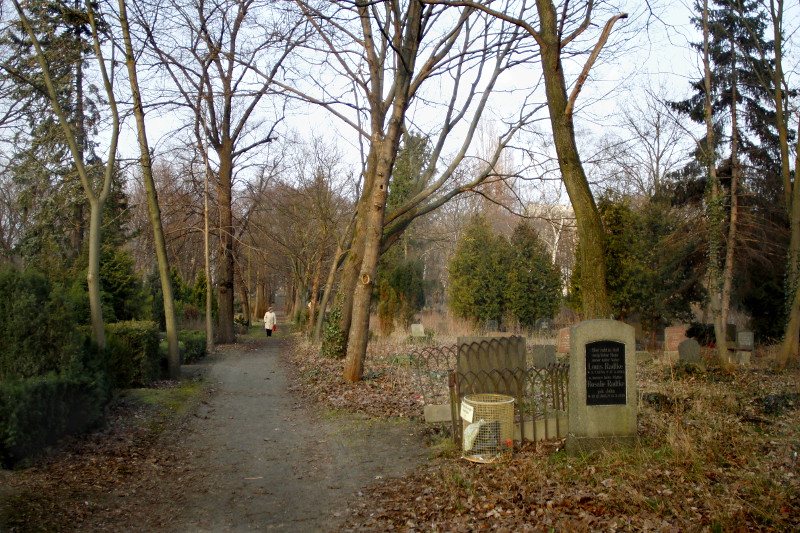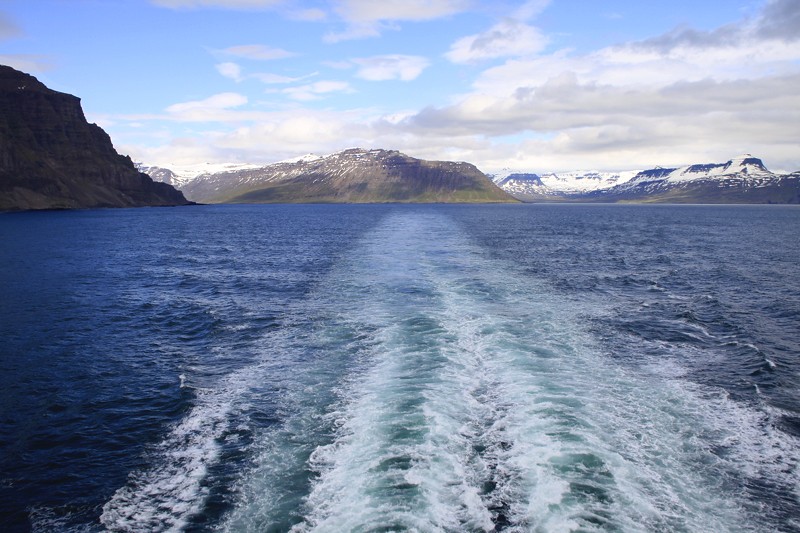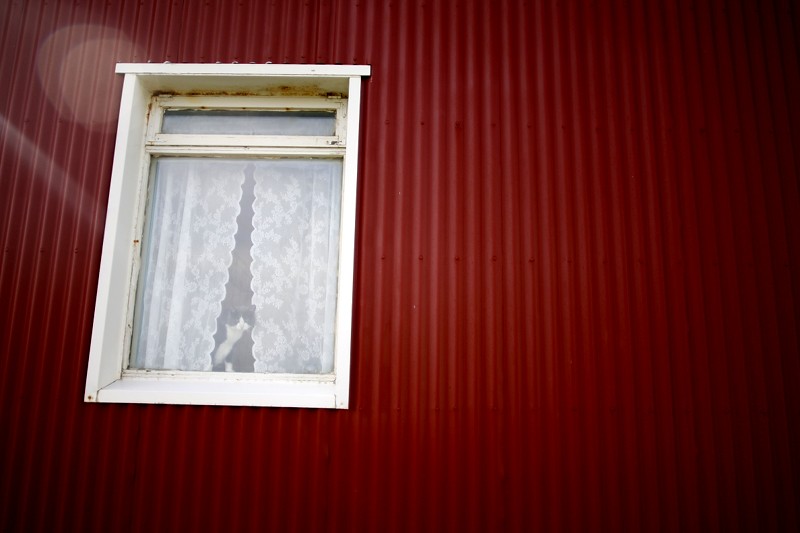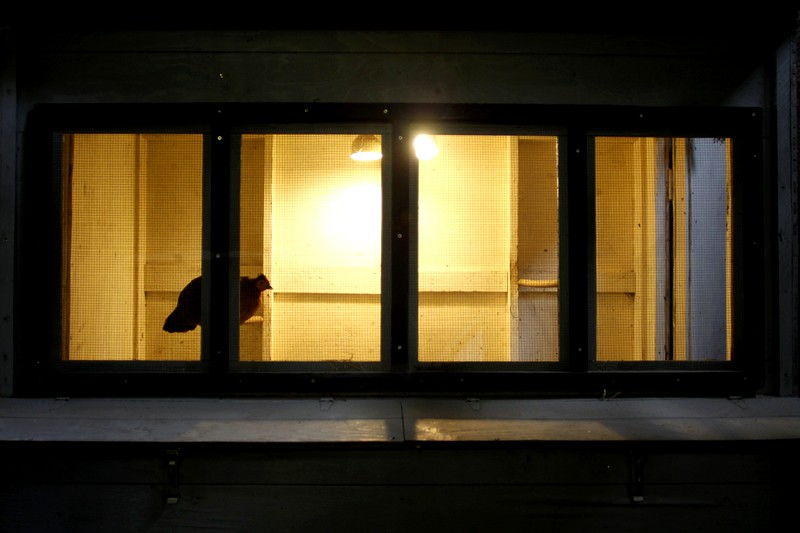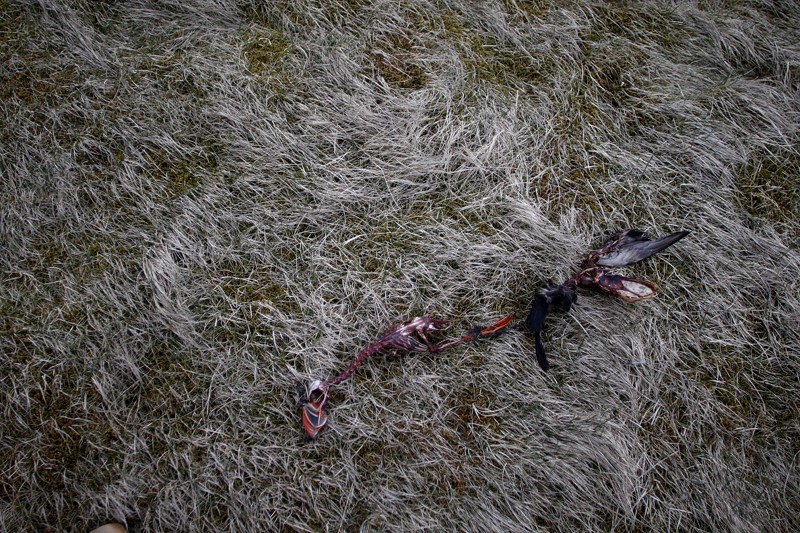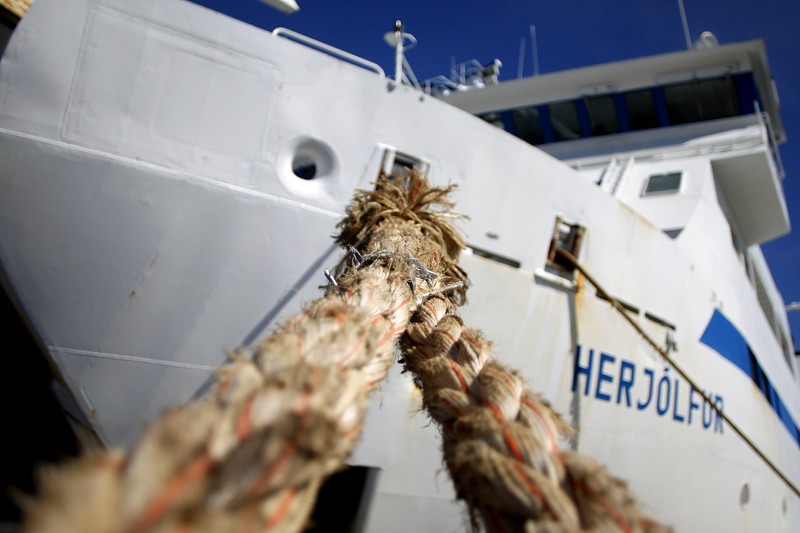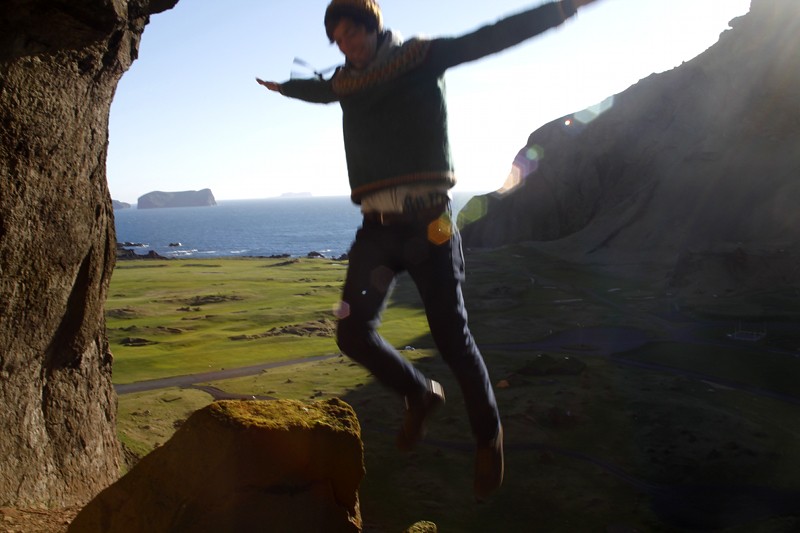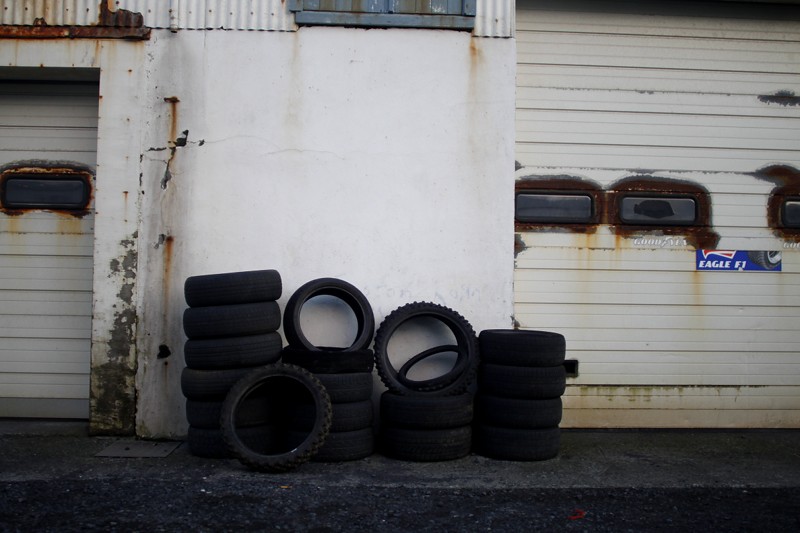23 March 2013
04 November 2012
21 October 2012
Views from Home
22 July 2012
Iceland Revisited
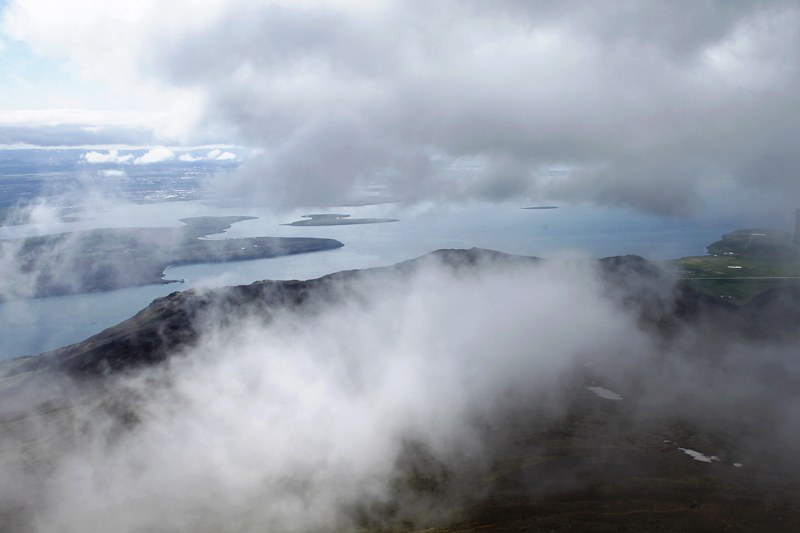
Esja at the top. In the clouds.

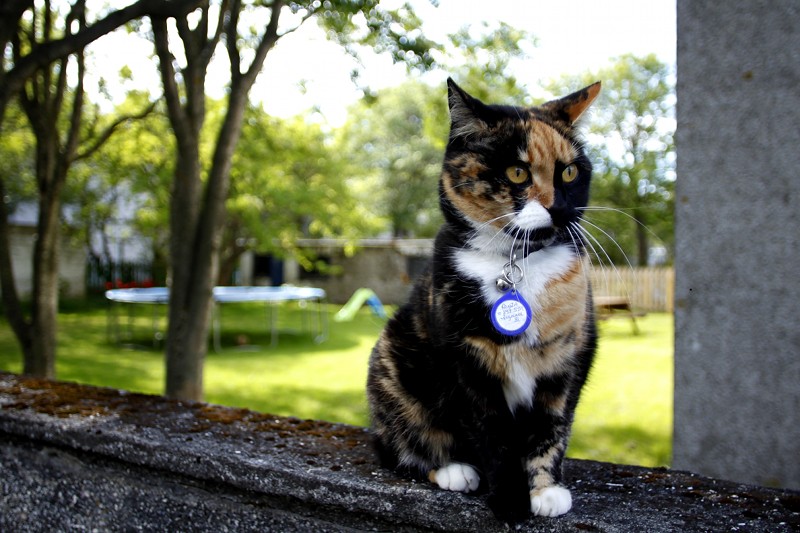
Reykjavik resident.

Lost together.
17 January 2012
The Many Mindless Murders Of The Great Auk
 Do you remember the story of the Great Auk, or as Icelanders like to call it, the geirfugl? The history of this extinct bird is staple curriculum in Icelandic schools, probably because three Icelanders killed the very last mating pair about 170 years ago. However, "the history of the Great Auk has faded away" in Iceland, says Kristinn Haukur Skarphéðinsson, wildlife ecologist at the Icelandic Institute of Natural History. Though at first, he says, "nobody knew they were killing the last auk," as soon as the truth of the matter revealed itself, Icelanders had to carry the burden of a "collective guilt that we did the Great Auk in."
Do you remember the story of the Great Auk, or as Icelanders like to call it, the geirfugl? The history of this extinct bird is staple curriculum in Icelandic schools, probably because three Icelanders killed the very last mating pair about 170 years ago. However, "the history of the Great Auk has faded away" in Iceland, says Kristinn Haukur Skarphéðinsson, wildlife ecologist at the Icelandic Institute of Natural History. Though at first, he says, "nobody knew they were killing the last auk," as soon as the truth of the matter revealed itself, Icelanders had to carry the burden of a "collective guilt that we did the Great Auk in."
But we have been massacring this poor, clumsy bird before humans were technically humans. Yes, believe it, Neanderthals hunted Great Auks over 100.000 years ago. And a whole lot of death occurred between then and that notable day of July 3, 1844 when the book of Great Auk was slammed shut. So who should really be held responsible for the extinction of the Great Auk? How much of the blame should Icelanders carry on their shoulders? Could the bird itself take some of it? Maybe just a little?
POINTING FINGERS, IF ONLY LITTLE ONES
The Great Auk, in some ways, had it coming. Living in the wilds of the North Atlantic and having a picky disposition when selecting breeding grounds is akin to accepting only foie gras for dinner during the Irish potato famine. Great Auks would only breed on rocky, remote islands near easily accessible food sources. They'd settle with no less than islands with sloping shorelines, which gave the birds easy access to the ocean, where they spent the majority of their time.
The birds were excellent swimmers, but their ability to traverse land resembled a drunken Icelander on a weekend night in Reykjavík. Just as easily as you could net a hipster leaving Bakkus at 5am on a Saturday, you could casually stroll up to a geirfugl, put 'em in a bag and eat 'em for dinner with some potatoes (the bird, not the hipster). For some strange reason, these animals didn’t have an innate fear of humans, which many cultures took advantage of for thousands of years, including the Maritime Archaic people of Newfoundland and Saqqaq Inuits of Greenland.
BUT IT'S NOT OKAY
Though the Great Auk made it super easy for us to wipe them out, it doesn't exactly warrant our overexploitation. Yeah, you could probably make a living out of mugging old ladies on the street, but the ease of it doesn't make it morally acceptable (unless they're giving you sass about your haircut, or something). Frankly, when pillows become more valued than the survival of a species, it's hard not to wonder whether humanity had its priorities straight.
Starting in the eighth century, Great Auks were hunted in droves for their feathers. By the mid-sixteenth century, the breeding colonies along the European boundary of the Atlantic were almost completely wiped out by humans smitten with selling the luxury of down pillows. Finally by 1775, the Brits banned the killing of auks for their feathers and eggs, though the birds could still legally be killed for bait and food. This was one of the first environmental laws, which, in many people's eyes, made the Great Auk the "emblem for extinct birds," says Kristinn.
Though the severity of public flogging, the punishment for killing an auk for feathers, was discouraging, anyone with minimal intelligence could deduce an easy way out of publicized embarrassment and torture: say you're hunting the auk for bait (“Yes, officer, it was only a cigarette, I swear.”), and save the feathers as a keepsake of your trials and tribulations at sea.
But anything that's worse than reckless overindulgence in life, is reckless overindulgence in death. In a grave near Port of Choix, Newfoundland that dates back to around 2.000 B.C., archaeologists found a person buried in a suit made of more than 200 Great Auk skins, the heads left on for extra bling.
THE BEGINNING OF THE END
Nothing really tops the way the last Great Auk of the British Isles was killed. Sorry Icelanders, you didn't win the barbarian award this time around. In July of 1840 on the Saint Kilda archipelago in Scotland, three local men caught and killed the very last Great Auk of the region. They tied the bird up and kept it alive for three days, until a hefty storm loomed over their islet. Instead of assuming that the intermingling of warm and cold air caused the storm (maybe too logical for the times), the men took the shitty weather personally, accused the auk of stirring the skies with witchcraft, and beat it to death with a stick. The impact of the slaughter on the storm's cessation was inconclusive.
By 1835, after centuries of mass annihilation, one colony of about fifty auks remained on Eldey, an island off the coast of Iceland. But when museums and private collectors found out the Great Auk had become so scarce, they commissioned any willing body to hunt down and kill auks for their skins and eggs to put on display in their collections. The irony of this situation couldn't possibly have evaded the people of the time. I'd even bet the sign underneath the specimens on display in museums read something like, "Great Auk skin, RARE bird species of the North Atlantic."
On July 3, 1844, three Icelandic sailors by the names of Sigurður Ísleifsson, Ketill Ketilsson and Jón Brandsson, travelled to Eldey to collect specimens as requested by Danish natural history collector Carl Siemsen. Jón and Sigurður each found and killed the male and female of the last mating auk pair (thought they didn't know it at the time), but Ketill was left empty-handed. Poor Ketill, feeling left out, decided to smash the last auk pair's egg with his boot. And that was that.
OVER BEFORE WE STARTED?
In the world of extinction, great emphasis is always put upon the last of a species. The events that take place in the beginning and middle have less weight because, by default, the animal's numbers are probably doing alright then. But ask any conservationist and they will tell you that when there's only one lonely couple left of a species, the game is already over. So Icelanders, yes, you technically killed the last hope for the Great Auk, but widen the scope of the extinction lens and you certainly weren't alone.
Originally published in The Reykjavík Grapevine
Labels: Culture, Iceland, Journalism, Nature, Science, The Reykjavik Grapevine
08 October 2011
07 October 2011
26 June 2011
Ingólfshöfði




And a little bit of travel writing...
Into The Ocean
A tour of Cape Ingólfshöfði's history and wildlife
My gloveless hands clutched the cold metal railing of the tractor-drawn hay cart as we drove into the sea towards Ingólfshöfði, an isolated cape located south of the Vatnajökull glacier. From a distance, a vast ocean seemed to separate us from our destination. In reality, it was a thin layer of water that the tractor's burly tires easily traversed.
In late April, the six kilometre drive through a wet, black sand desert to Ingólfshöfði, though scenic, was a cold and bumpy one. The bumps, however, produced mostly giggles over grumbles from me and my travel mates. We could see Ingólfshöfði's silhouette in the distance, and its elusiveness kept us inquisitive and happy.
The only way to get to Ingólfshöfði is via amphibious vehicles or tractors (so don't try to drive there in your rental, even if it's a 4x4). For the past decade, Sigurður Bjarnason, a retired farmer of the area, and his family have been driving gaggles of tourists out to the cape daily during the summer using their nifty tractors. Due to Sigurður's increasing age, his son Einar has taken over most of the tours with his wife Matta.
Though I usually prefer traveling on my own to guided tours, I was pleasantly surprised by Einar's tour of Ingólfshöfði: he did not herd the group like cattle, nor did he make cheesy jokes that aimed to please the dull-brained masses. He provided information about the history and ecology of the cape in a relaxed, straightforward manner and came equipped with a monocular through which we could all gaze at seabirds. We spent about an hour and half on the cape and walked about 2-3 kilometres following the cliff ledge.
Before Einar mentioned it, I had no idea Ingólfshöfði was named after the first permanent settler in Iceland, Ingólfur Arnarson, who spent a few winters on the cape in the late 800s before moving to Reykjavík. When Ingólfur and brother-in-law Hjörleifur Hróðmarsson first saw land on their voyage from Norway, Ingólfur threw his high-seat pillars (a pair of wooden poles that symbolized the status of head of the household in Scandinavian houses) overboard and vowed to settle where the gods brought them to shore. It took three years for Ingólfur's slaves to find the pillars in the bay of what is now Reykjavík.
During the summer, thousands of nesting seabirds call Ingólfshöfði home, especially puffins and Great Skuas, which is one reason why many tourists travel to the cape on Einar's tours. Before heading out, Einar warned us that we might not see puffins this early in the season. In late April, only the males have come to shore to clean out their old nests, a burrow usually situated at the edge of a sharp precipice. After cleaning, the males line the newly excavated nests with a fresh layer of plants, feathers and seaweed. The females, who are courted and charmed (and impregnated) on the rough waters of the north Atlantic Ocean, come to land around mid-May, when they have to find their mate amongst a bustling colony of other puffin couples.
Puffins start breeding at around four to five years of age and remain with the same mate for life. These birds are the ideal of monogamy in the flesh; divorce rarely occurs, and when it does, it's usually because the pair failed to produce young after trying for several years. . Some of its neighbours on Ingólfshöfði, like the Great Skua, sabotage the puffin's romantic lifestyle by murdering its children. With a wingspan of up to 140 cm, Great Skuas are much larger than puffins and find their young quite tasty.
Known to fly at the head of humans or other intruders approaching its nest, the Great Skua is a feisty parent. While on Ingólfshöfði I felt as though they were watching me closely as I paraded around their home. (The puffin, however, remained oblivious to our presence until someone got too close.)
After climbing up a steep-ish sand dune, Einar guided the group along the cliffs of Ingólfshöfði that faced the open ocean. In the corner of my eye, I caught a glimpse of a silly little bird flapping its wings vigourously in an attempt to make it to the edge of the rock ledge. With its natural tuxedo and colourful beak, puffins are not that difficult to spot. Before plummeting down to the ocean below, the puffin remained still just long enough for all of us to get a closer look at him through the monocular, which my bird-crazy eyes enjoyed immensely.
On our way back to the tractor, I spotted the skeleton of a bird stripped bare to the bones lying in the grass, its bright orange and black beak giving away its identity. Despite their comical name and appearance, I was reminded while on Ingólfshöfði that puffins are real, live animals, susceptible to the grips of skuas, starvation and disease. Seeing them in their natural habitat, they became much more than the caricature tourism companies portray them to be. For this, I have a newfound respect for puffins; for tour guides, too, and their fancy monoculars.
Labels: Culture, Iceland, Journalism, Nature, Science















